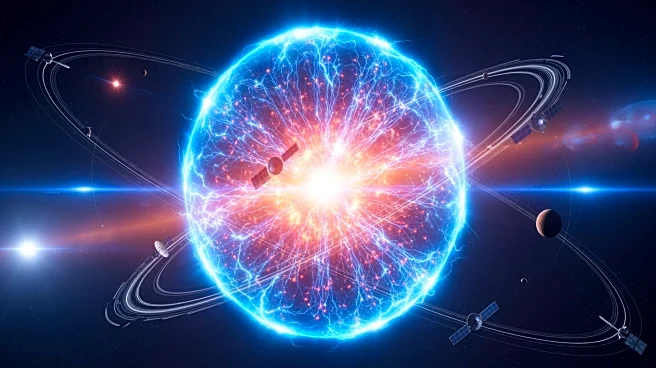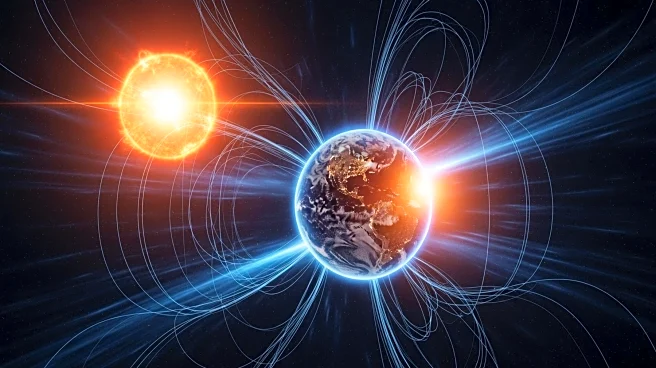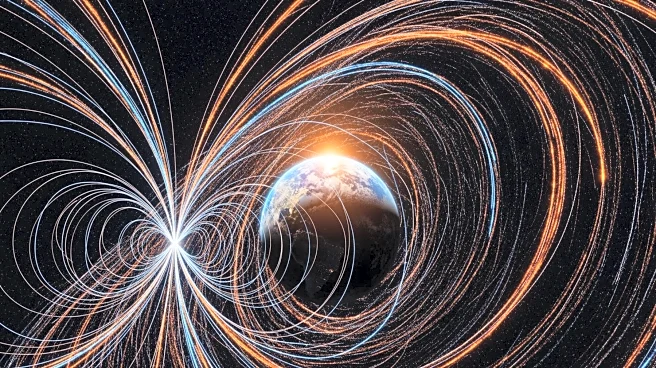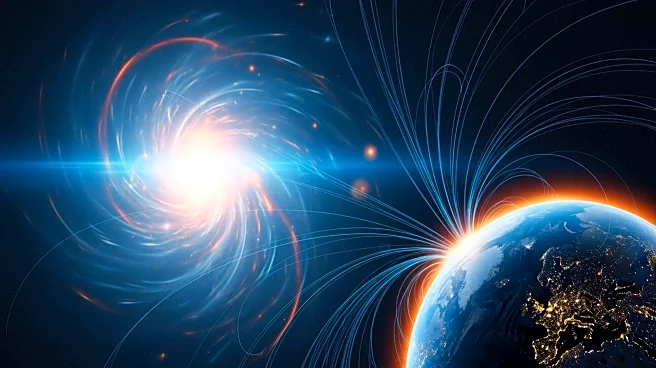What's Happening?
A geomagnetic superstorm, known as the Gannon storm, struck Earth on May 10-11, 2024, marking the strongest event of its kind in over two decades. This superstorm, caused by massive solar eruptions, compressed
Earth's plasmasphere to a record low altitude, significantly affecting GPS accuracy and satellite operations. The Arase satellite, launched by the Japan Aerospace Exploration Agency, provided crucial data during the storm, capturing the severe compression and slow recovery of the plasmasphere. The storm pushed the plasmasphere's outer edge inward from 44,000 km to 9,600 km above Earth's surface, with recovery taking over four days, the longest recorded since 2017. The intense solar activity also shifted auroras toward the equator, creating rare displays in regions like Japan and Mexico.
Why It's Important?
The Gannon storm highlights the vulnerabilities of technological systems reliant on stable space weather conditions. The prolonged disruption of the plasmasphere affects GPS accuracy, satellite operations, and radio communications, posing challenges for industries and sectors dependent on these technologies. Understanding the plasmasphere's response to extreme solar events is crucial for improving predictions of space weather impacts and safeguarding technology. The findings from this event provide valuable insights into the dynamics of Earth's protective plasma layer, aiding in the development of strategies to mitigate future disruptions.
What's Next?
Future research will focus on enhancing space weather forecasting and developing protective measures for satellites and communication systems. Scientists aim to better understand the link between negative storms and delayed plasmasphere recovery, which could lead to improved prediction models. Stakeholders in technology and communication sectors may invest in resilience strategies to minimize the impact of similar events. Additionally, international collaboration in space weather monitoring could be strengthened to ensure comprehensive data collection and analysis.
Beyond the Headlines
The Gannon storm underscores the importance of Earth's magnetic field and plasmasphere in shielding technology from solar disturbances. The event reveals the intricate relationship between solar activity and atmospheric chemistry, particularly the role of negative storms in prolonging recovery times. This understanding could influence future satellite design and deployment strategies, emphasizing the need for robust systems capable of withstanding extreme space weather. The cultural impact of auroras appearing in unexpected regions also highlights the broader effects of geomagnetic storms on human perception and experience.











